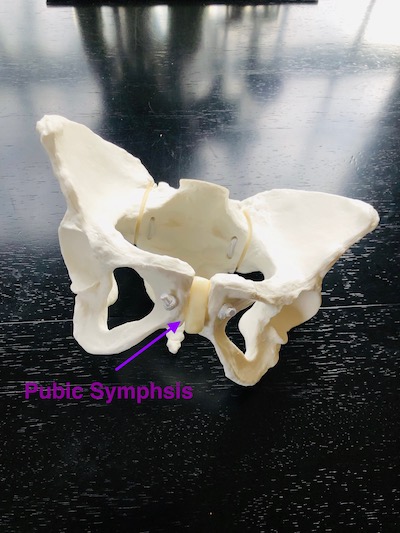
When I was finally done with my first trimester nausea and fatigue the pain rolled in. I was just sitting in a chair at a business meeting and stood up and it was ridiculous-pain in the front of my pelvis. I finally felt like I could function and now physically I can not walk or even put on a pair of pants. Yuck! Throughout the pregnancy I continued to have this pain that would switch between low back pain or pain in the front of my pelvis. It made it hard to do my job at the time of helping children and even though I knew how to balance my pelvis with special common physical therapy activities my pelvis wanted to hurt.
I was determined that this would not happen with subsequent babes. Starting very early (like as soon as I knew I was pregnant) I started preventative strategies and Rost therapy. One of the “Rost” approaches I used rocks the boat on traditional physical therapy treatment of symphysis pubic dysfunction (SPD). Instead of constantly keeping my legs together, to not allow muscles to pull on the pubic symphysis, I would daily rest in a goddess yoga pose. This allowed me to gently stretch my inner thigh muscles, aka the hip adductors, so that these babies (muscles) were not tightly pulling on my pubic bone or symphysis pubis.
It is very common for mamas to experience symphysis pubic dysfunction at some point in pregnancy and may even carry this over into the postpartum stage as they are healing. In fact I see ladies with SPD months sometimes years after having baby. It is even common for it to creep up on ladies right before their periods as progesterone is climbing and the bod is a little more tender.

The symphysis pubis increases 2-3 mm in pregnancy due to softening in the cartilage disc that separates the two pubic bones. This occurs due to increase in certain hormones such as progesterone. Pre pregnancy the pubic bones are separated 4-5 mm. By the end of pregnancy this space averages 7.7 mm, but can range between 3-20 mm! In ladies that have a gap greater than 9 mm, it is considered diastasis of the symphysis pubis (DSP).1Björklund, K. Sonographic assessment of symphyseal joint distention during pregnancy and post partum with special reference to pelvic pain. Acta Obstetricia et Gynecologica Scandinavica, volumn 78, 2 (1999):125-130.
What is a gal to do?
- Stretch the hip adductors gently and allow them time to relax.
- Massage the trigger points (TP) in crabby hip adductors by placing a light to medium pressure on them for 60-90 seconds or until the TP feels less irritable (see this video)
- Specifically see an obstetric trained physical therapist that has experience working with SPD. We can certainly help balance the pelvis with manual techniques or teach you approaches to balancing your own pelvis. We also go through body mechanics to help reduce strain to the pubic symphysis.
- Serola sacroiliac belt mama! Place this fancy belt on once you feel a bit more stable to help support your pelvic girdle.
My clients have had amazing relief with me working through some of the above techniques and tailored programs specifically for their lifestyle, and stage postpartum. Once client specifically emailed me after one session:
“I just wanted to drop a quick note to tell you that I had a fully pain-free yoga class this morning. I focused my attention on using those visualizations with breathing and it made a world of difference. I didn’t even have to do significant modifications! That really gives me some hope that this could get better! Thank you so much for your help!”
If you are not sure if you are experiencing any pelvic girdle pain or more specifically symphysis pubis dysfunction please use this amazing and researched based questionnaire to track your progress. I use this with my clients in the clinic to understand where function limited. It is also helpful to review this questionnaire after care or several weeks later to see if you have improved!
Mama you do not have to live in pain. There are so many approaches to care of your body. Please contact me today for more help! I offer a complimentary phone consultation for you to tell me your story!
References
| ⇧1 | Björklund, K. Sonographic assessment of symphyseal joint distention during pregnancy and post partum with special reference to pelvic pain. Acta Obstetricia et Gynecologica Scandinavica, volumn 78, 2 (1999):125-130. |
|---|

